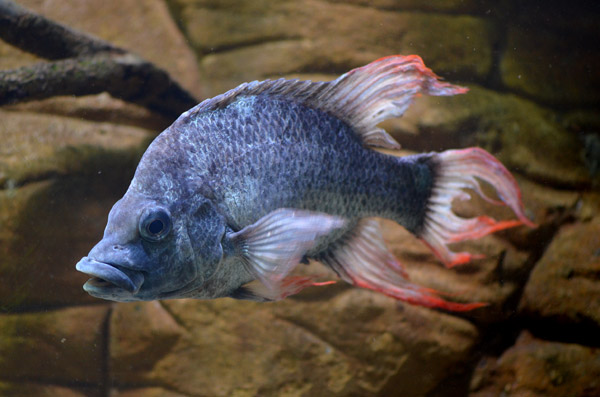With a the whole news-cycle industry programmed to grab your attention with “if it leads it bleeds” headlines, we’ve got a trio of stories to counter all the downer news out there.
Earlier this year, aquarists at the Zoological Society of London (ZSL) became aware that their two male Mangarahara Cichlid , Ptychochromis insolitus, might be the only ones known in captivity. In what was described as a hail-mary attempt to find females of the Mangarahara cichlid, the ZSL put out an open call to aquarists around the world .
Thankfully, a Malagagasy businessman who saw the pictures and recognized the fish got in touch with the ZSL and tipped them off to a small river tributary which still houses some of the fish. A successful expedition later and now the fish has been confirmed living in the wild while a handful of specimens were collected to be part of a new breeding program for the critically endangered fish.
 So you know how all the coral reefs of the world are dying, and there’s no chance of them surviving at all beyond 2050? Well apparently the reefs in teh Cayman Islands didn’t get the memo. A 13 year research study by the University of Florida in the Cayman Islands showed that Coral Reefs can be saved. A host of diseases, infections and other damaging events degraded Cayman Island coral reefs by more than 40% from 1999 to 2004. This is the kind of alarming reef degradation that has gotten coral researchers up in arms.
So you know how all the coral reefs of the world are dying, and there’s no chance of them surviving at all beyond 2050? Well apparently the reefs in teh Cayman Islands didn’t get the memo. A 13 year research study by the University of Florida in the Cayman Islands showed that Coral Reefs can be saved. A host of diseases, infections and other damaging events degraded Cayman Island coral reefs by more than 40% from 1999 to 2004. This is the kind of alarming reef degradation that has gotten coral researchers up in arms.
But as we aquarists know too well, corals can recover quite well when the stressors are removed, and that’s exactly what happened in the Caymans with the corals reefs spending the next seven years from 2004 to 2011 recovering to their 1999 state. We’re not saying that coral reefs are in anyway out of the woods when it comes to their future, but it’s not the black and white, doom and gloom that has been professed to us for the last two decades.

Finally, there’s been a battle raging in Hawaii over aquarium fish collection, and the tension between different stake holders of fish resources including SCUBA fishermen and recreational diving operations. In a battle that has culminated for many years, finally some decent, common sense legislation has been enacted for West Hawaii which doesn’t ban aquarium fish collection, but monitors and regulates it very closely. The new Hawaii aquarium fish legislation creates a white list of 40 species of reef fish which are permitted to be collected for the aquarium trade.
These include all the most important, popular marine fish that we love to see coming from Hawaii including Tinker’s butterflyfish, Flame wrasses and many more. The rare fish collectors will be saddened to see that bandit angels, hawaiian longfin anthias, yellow anthias, sunrise hogfish and personatus angelfish are ostensibly missing from the list, so we guess we won’t be seeing those out of West Hawaii anytime soon. While we lament the exclusion of some of the more sensational species from the West Hawaii white list of allowable aquarium collections, the good news here is that there isn’t a complete ban on collection and the interested parties seem to be working together to manage the resources of West Hawaii.



